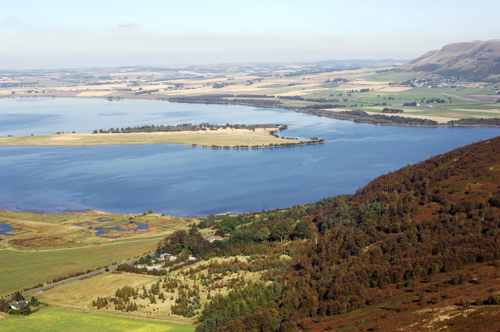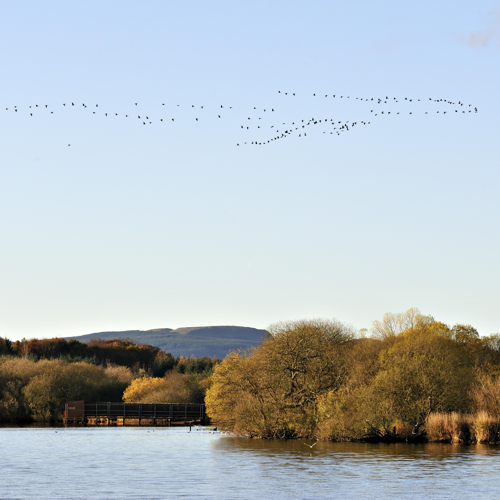Kirkland Marsh is a wetland on the banks of the Leven at Methil. It is small, at 1 hectare in size and is protected from drying out by a sewage pipeline on one side and a steep bank on the other. It is dominated by one species of wetland plant – reed canary grass, but also has a few patches of rush and bulrush. Looking at the marsh, the water appears quite dirty, but this is an indication that it is doing a good job of trapping and storing pollution, rather than allowing it to run into the River Leven.
Herons and moorhens occupying the marsh as well as reed buntings that breed here. As it is hard to get into the marsh, it provides these birds with a lot of protection from predators. Their presence also indicates a plentiful supply of insects, seeds, berries and amphibians for them to feed on.
So even a small wetland like Kirkland is really important for biodiversity in the local area.
Loch Leven
 Loch Leven is the largest lowland loch in Scotland and one of the most significant wetland sites in the UK. Its wetland and woodland habitats support internationally important populations of wintering and breeding waterbirds, and provide a haven for other wildlife.
Loch Leven is the largest lowland loch in Scotland and one of the most significant wetland sites in the UK. Its wetland and woodland habitats support internationally important populations of wintering and breeding waterbirds, and provide a haven for other wildlife.
From autumn to spring, tens of thousands of birds from far and wide use it as a stopover to rest and refuel on their migrations. This includes over 20,000 geese, around 10% of the world’s population! To see and hear thousands of geese taking flight in a winter’s dawn or dusk is an experience not to be missed.
In summer the shallow loch is home to the largest concentration of breeding ducks in inland Europe. Also in summer, osprey can be seen hunting over the water perhaps hoping, like the anglers, to catch one of the loch’s world-famous brown trout.
With the 21 kilometre path surrounding it, there is no doubt that this world-class loch provides an exceptional wildlife experience.
Photos credit - Lorne Gill (SNH)

 Loch Leven is the largest lowland loch in Scotland and one of the most significant wetland sites in the UK. Its wetland and woodland habitats support internationally important populations of wintering and breeding waterbirds, and provide a haven for other wildlife.
Loch Leven is the largest lowland loch in Scotland and one of the most significant wetland sites in the UK. Its wetland and woodland habitats support internationally important populations of wintering and breeding waterbirds, and provide a haven for other wildlife.